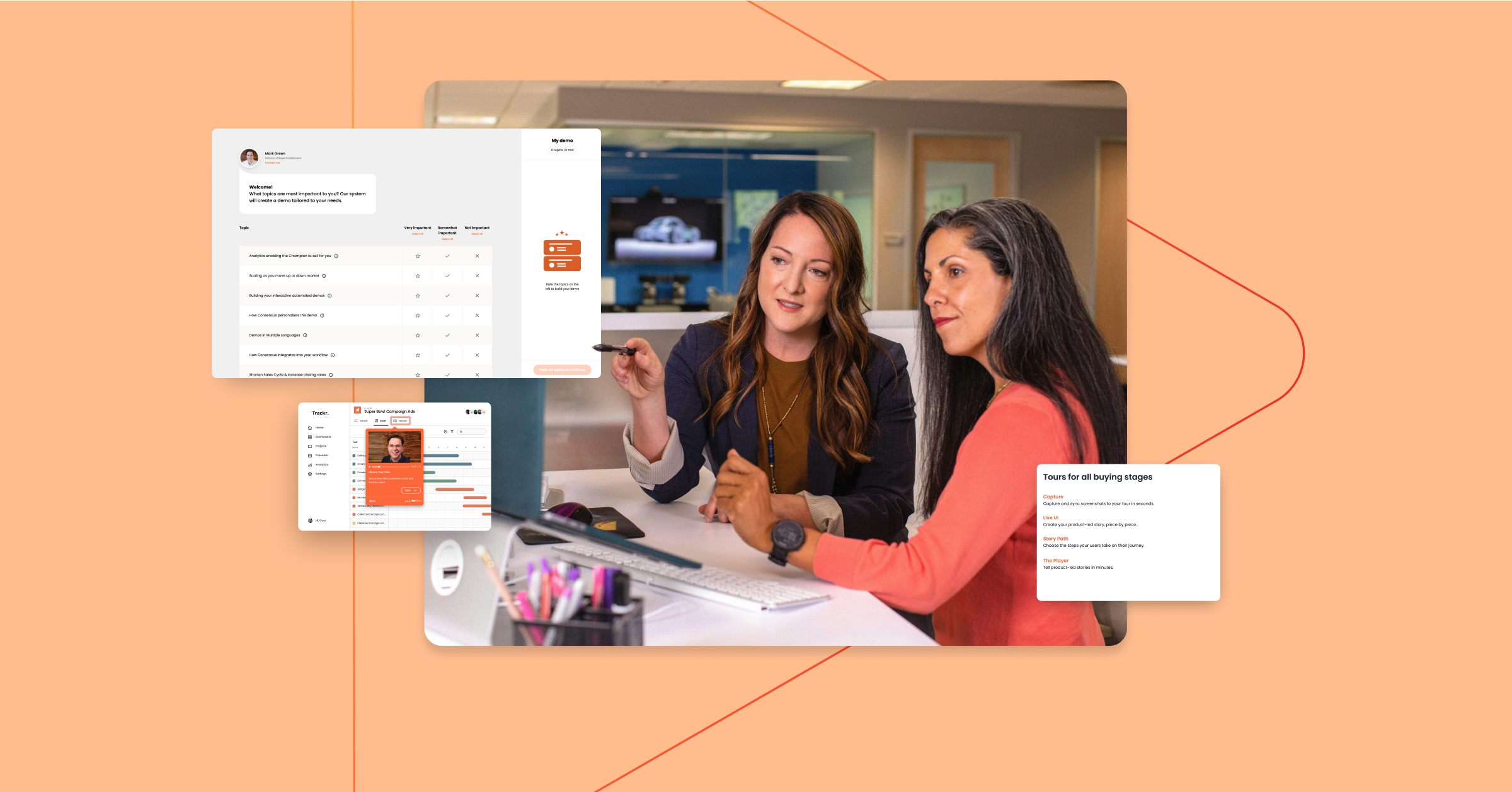With over 20 years of experience, Mark leads Consensus in helping companies expand presales impact ...
Close more deals with
Demo Automation.
Watch a Demo
When the deal is so close to being done you can almost taste it, is when buyers have to look at your solution under a microscope to make sure everything lines up. You’re desperately trying to get them to cross the Ts and dot the Is, but they’re searching for verification that your solution can be implemented and integrated with their current structure.
This is where any lingering questions need to be addressed and secondary stakeholders need to be considered. Having intelligent automated demos that cover the specifics around APIs, data security, and other logistical considerations will streamline this process and allow for all parties involved to be reassured of success.

Introducing the Closing Demo
The closing demo is mostly about making commitments. You are making commitments on what deliverables your solution will provide and the buyer is making a commitment to the deal. And they want to make the commitment, they really do, but they are looking to you to produce information that will reassure them this is the right decision.
While some of the customer’s emotional ROI was addressed in the Technical demo, the Closing demo is where you can further increase buyer confidence by mapping out the steps for implementation, provide pertinent training material, and supply any other information that will set them up for success.
“Buying a software solution is more than just making a purchase, it’s usually just one part of a complex change project, so helping buyers feel supported and confident is crucial. I’ve found that by providing tools for the champion to fend off last minute attacks from outlier stakeholders is both incredibly helpful to your champion, but also to accelerating your sale.”
– Mark Green, Director of Buyer Enablement & Presales, Consensus.
It’s almost a guarantee there will be secondary stakeholders coming in with their own questions such as IT or Legal. They will probably require specifics on data migration, integrations, and how you handle GDPR.
Where Closing Demos Fit in Your Sales Model
Just like the name implies, the Closing demo happens at the very end of the cycle. The focus of this demo should be on putting customer fears to rest and smoothing the way for implementation.
What are buyers thinking at this stage? Buyers are thinking about what a huge disruption your solution will be to their current system. They want concrete examples for how implementation will go and verification that no blockers have been overlooked.
What should you deliver? Content that will increase customer confidence in their decision and address any remaining doubt. These could include examples of implementation schedules, training modules, and deeper looks at specific questions brought up in the last demo.
Where does it fit in your sales model? At the end of the buying cycle when everyone is satisfied that this is the best solution.
Should you Automate it? Yes. While each company will have their own specific needs, each industry you sell to will have some overlap surrounding the types of requirements they often have. Keep track of the most common questions that come up at the end of every deal and create demos that address the questions that are brought up most often.
Check out the Definitive Guide to the Six Demo Types for a complete map for scaling presales and adopting these demo types into your sales methodology.





